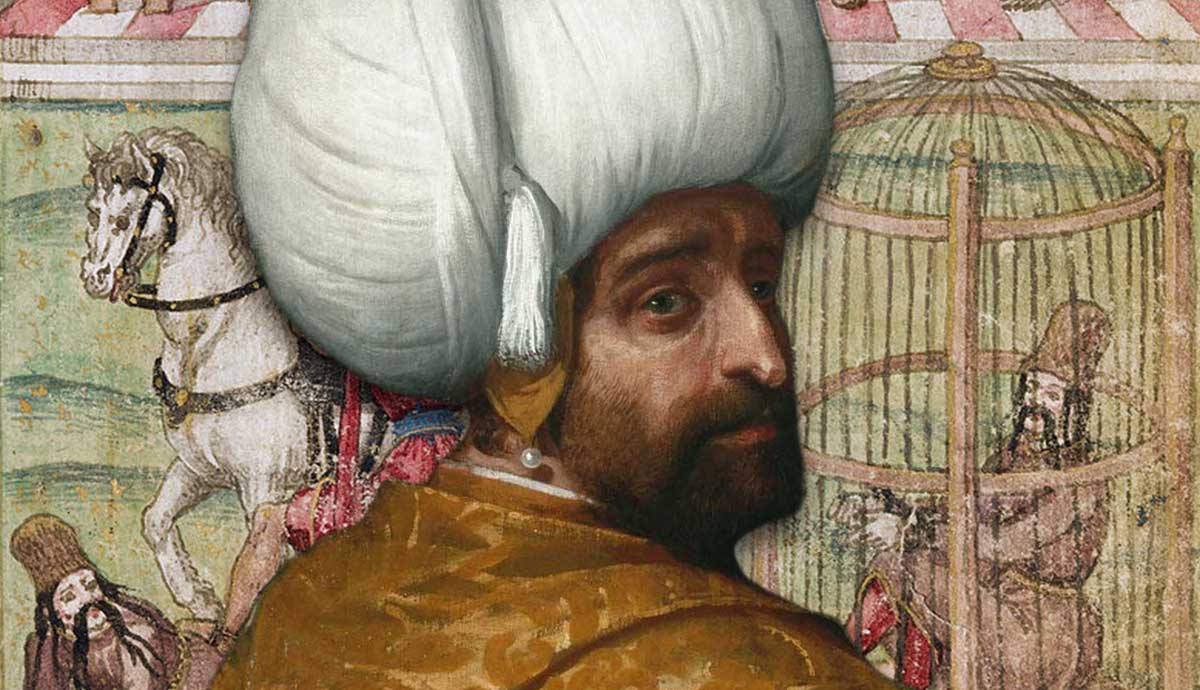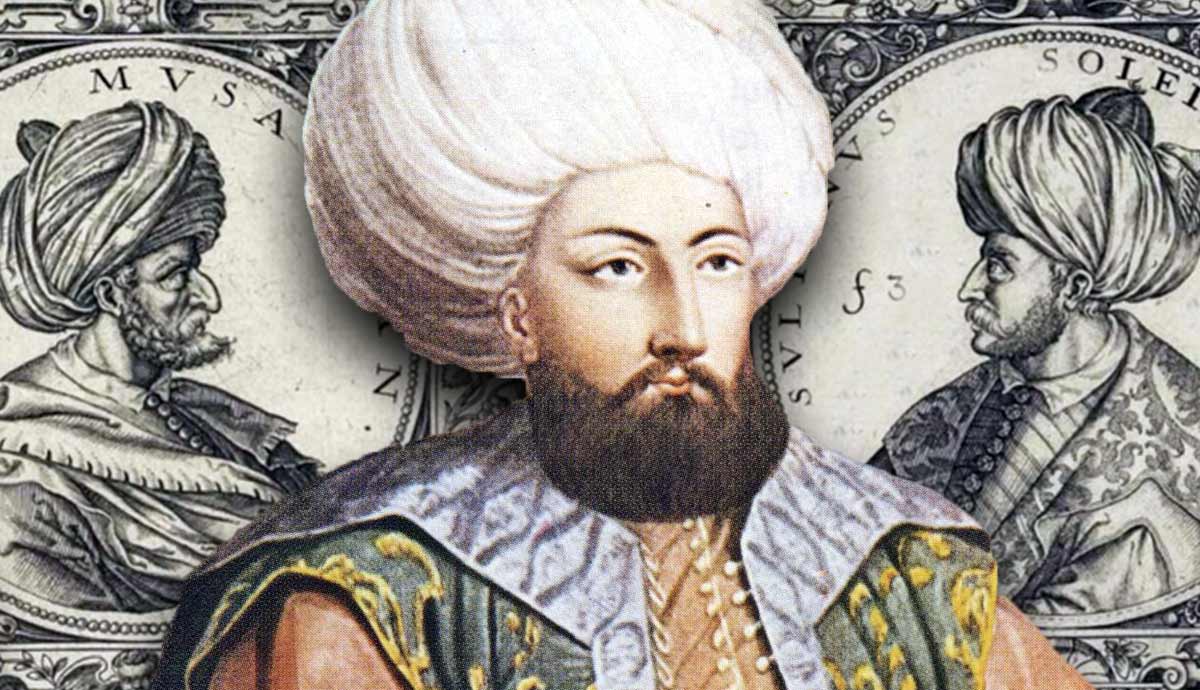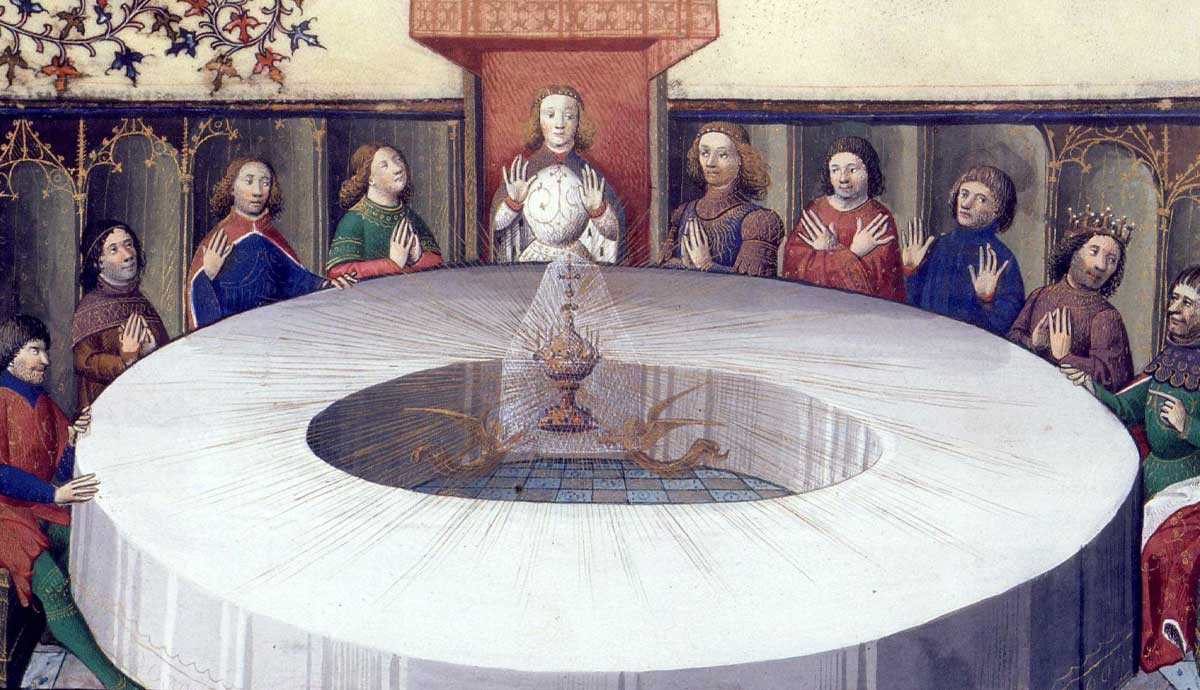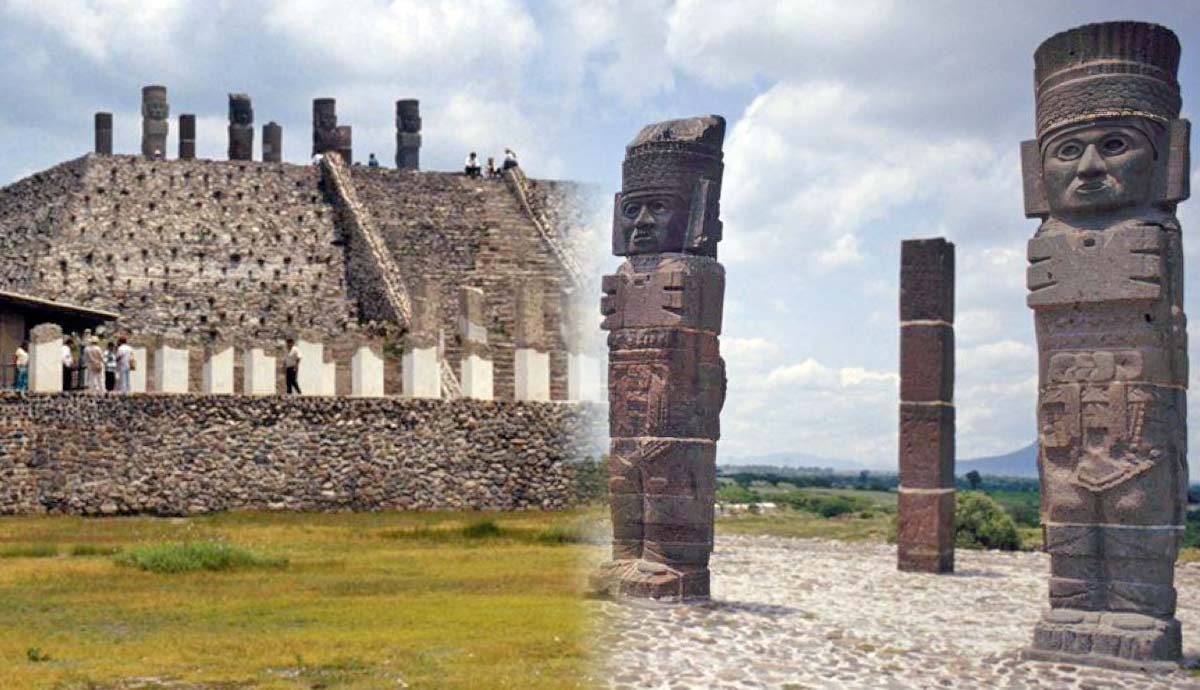
In the late 14th century, Ottoman Sultan Bayezid I annexed several Turkic emirates to ensure the political unity of Anatolia (modern-day Turkey). The lords who had their principalities usurped by Bayezid requested the aid of Timur, founder of the Samarqand-based Timurid dynasty, and self-proclaimed “protector” of Muslims. At the Battle of Ankara in 1402, Bayezid and Timur fought to secure their political hegemony. However, Bayezid’s luck seemingly ran out on the battlefield. Both the Sultan and his Serbian wife Despina were captured by their rival.
The Ambitious “Thunderbolt”

Born in 1360 as the son of Ottoman Sultan Murad I and his Greek wife Gülçiçek Hatun, Bayezid was educated by the foremost contemporary scholars in the fields of Islamic philosophy, warfare, and statecraft. The first known mention of the young şehzade (prince) concerns his marriage in 1381 to Devletşah Hatun, a princess of the Turkic Germiyanid Dynasty. Devletşah’s dowry included much territory across Anatolia, which subsequently came under Bayezid’s control.
As a prince who both governed territories and commanded a wing of his father’s army, Bayezid gained a reputation as a daring and ambitious but somewhat impulsive leader. These characteristics earned him the moniker, “thunderbolt” or Yildirim in Turkish, which is how his father referred to him.
As part of his ambitious nature, Bayezid dreamt of expanding his dynasty’s power and conquering Constantinople, the imperial capital of the Byzantine Empire. In his youth, Bayezid was most likely exposed to the “conquest” Hadith (sayings of the Prophet Muhammad) which predicted that a great Muslim army and even greater conqueror would one day conquer Constantinople. Yet, Bayezid’s position as a prince was one of submission and obedience to his sultan father. Any desire for conquest would remain unfulfilled until he became Sultan, a position dependent not only on his father’s death but also on his ability to defeat his brothers — who under Turkic custom had an equal claim to the throne.
The Thunderbolt Strikes

By the late 14th century, the once petty Ottoman emirate had become a great military power. Expanding out of Anatolia, Bayezid’s father Murad I had been the first sultan to develop the small ghaza (“holy war”) raids into Balkan territories into fully-fledged conquests. By 1387, parts of Greece and all Southern Macedonia were captured. Murad’s advancement into Serbia was initially halted by Serbian Lord Lazar. Yet, as the Ottomans steamrolled through the Balkans, the two rulers met face-to-face at Kosovo Polje in 1389.
In this decisive battle, both Prince Lazar and Sultan Murad were killed. The ever-astute Bayezid quickly secured the allegiance of his father’s statesmen, although this technically could not prevent his brother Yakub from asserting his right to rule. According to popular tradition, Bayezid had Yakub summoned to his father’s tent on the field of Kosovo. The unassuming prince was then strangled to death with a silk cord.
Now, nothing stood in the way of Bayezid and his aspirations of rulership and conquest.
From Sehzade to Sultan

By the beginning of Bayezid’s rule in 1389, the Ottomans controlled vassal principalities across Western Asia and Europe. The Byzantine emperor, the Serbian Despot, and several Turkic chiefs in Anatolia, like the Karamanid and Candarid dynasties, came under Ottoman control. These vassal states were expected to lend military support to Ottoman campaigns, even if it meant fighting against their co-religionists.
Bayezid quickly adapted to his new role; in 1393, he stormed into the Balkans, bringing Danubian Bulgaria under his rule. Next, he annexed Nicopolis (Northern Bulgaria) and executed the Bulgarian King Shishman. Bayezid also moved the Ottomans toward a more centralized system of governance.
Fearing the ever-increasing Ottoman encroachment, Pope Boniface IX declared a new crusade against the Turks in 1394. Bayezid had put Constantinople under siege that same year, adding to the sense of urgency. Several European nations, such as France, Hungary, Germany, and Wallachia swiftly banded together their forces to create a Crusader army. Yet, they—along with independent Western Knights—were no match for the highly organized and united Ottoman army. Commanded by the sultan, the elite Janissary forces—slave soldiers who were taken as a tax from Christian families in the Balkans—and sipahis (cavalry) led the Ottomans to a stunning victory at the Battle of Nicopolis (1396).
Bayezid’s victory was, in both Anatolia and Europe, a confirmation of his glory and strength. Yet, the conqueror’s dreams of a centralized empire were halted by the existence of Turkic principalities who demanded independence. The question remained as to how Bayezid would ensure Ottoman supremacy over these Muslim polities within the boundaries of Islamic law, which forbade war against other Muslims.
Stretched Thin

Returning to Anatolia in 1398, Bayezid immediately began to plan the subjugation of his greatest rivals. By the end of the year, he had added the Karamanids and the principality of Kadi Burhaneddin to his empire. This was not surprising considering Bayezid’s self-image. In 1395, the Sultan had written to the Abbasid caliph in Cairo to secure his title as “Sultan-al-Rûm,” or Sultan of the Byzantine (Anatolian) lands. Of course, Bayezid was not only motivated by ideas of grandiosity or religious fervor. By gaining control of Beylik lands as far as East as Erzincan (Eastern Turkey), the sultan secured important Silk Road trade and caravan routes, and thus, increased state revenue and wealth.
However, the Turkic beys (chieftains) who ruled the different branches of the semi-nomadic Turkic settlers were greatly distressed by the loss of their lands and power. Desperate to repel Bayezid, they appealed to Timur (or Tamerlane), a Turco-Mongol raider-turned-ruler, to protect them against the Ottoman powerhouse.
The Wrath of Timur

Timur (b.1330s, d.1405) was born in Modern-day Uzbekistan to a minor nobleman of the Barlas Tribe, a Turkicized nomadic Mongolian group. As a young man, he gained a reputation as an astute military leader in the service of the Mongol Khans. Due to a leg injury, Timur developed a limp, earning him the epithet “the Lame.” Following his meteoric rise to power, Timur expanded his empire—which reached from Persia to Delhi—mainly through incessant campaigns and conquests. Such sieges were also conducted as far west as Armenia and Eastern Anatolia, where regional lords came under his influence.
It was their mutual claim to power that brought Bayezid and Timur in contact with one another. Correspondence between Bayezid and Timur indicates that the former viewed Timur as a “caffre” (from Turkish “kafir” meaning infidel), a view partially related to Timur’s Mongol ancestry. This, in Bayezid’s eyes, made Timur a legitimate target for holy war. On the flip side, Timur viewed himself as the protector of Muslims, such as the Turkic rulers whose lands were being usurped by Bayezid.
Several insulting letters were exchanged between the rivals; Timur referred to Bayezid’s armed forces as “poll-tax-paying caffres” (Anooshahr, 2008, p.125) most likely referring to the Christian vassals who sent military support to Bayezid. The Ottoman sultan, on the other hand, claimed that Timur would “shed blood, and violate the honor of women” (Anooshahr, 2008, p.123).
These tensions boiled over when Bayezid refused to deliver Kara Yusuf—ruler of the Karakoyunlu emirate who had sought asylum in Anatolia—to Timur. In the Central Asian conqueror’s eyes, this was an open declaration of war.
The Battle of Ankara

Preoccupied by his siege of Constantinople, Bayezid was caught off guard by Timur’s entry into and sack of Sivas (Central Turkey). Yet, true to his reputation as a “thunderbolt,” the Ottoman sultan readied his forces for battle, and hurriedly marched toward Ankara, hoping that Timur would execute a premature attack. However, Timur was a master of war, and rather than follow Bayezid’s army, he invaded the latter’s undefended territories. Bayezid then moved his army to Tokat, around 360 miles east of Ankara. On a seemingly never-ending march, Bayezid’s forces began to tire, no doubt affected by the blazing summer heat.
Timur’s army was much more flexible. They were accustomed to long sieges and had a cavalry that used steppe warfare tactics. As a result, they conducted efficient attacks and swift retreats, destroying their enemies while suffering minimal damage themselves. On the road to Ankara, Timur’s forces had laid waste to significant land and resources that Bayezid’s army needed. Reaching the city before the Ottomans, Timur cut off the city’s water supplies, which exacerbated the condition of Bayezid’s parched soldiers.
When the two armies finally met on the battlefield, things only got worse for Bayezid. He was deserted by his Tartar (Mongol) and Turk fighters, who chose to fight alongside Timur. The Ottoman army lost further traction as the Serbian flanks retreated. However, Bayezid refused to abandon the battlefield until the very end. Needless to say, this led to his capture by Timur’s forces.
A Humiliating Fate

The Timurid victory was a great blow to the prestige and reputation that the Ottomans had built up over the previous century. Following Bayezid’s defeat, their capital city of Bursa was plundered by Timur’s forces. The Turkic lords had their principalities restored to them, resulting in a significant loss of territory for the Ottomans. Perhaps most significantly, Bayezid and his wife Despina Hatun, sister of Bayezid’s Serbian ally Prince Stefan Lazarević, were captured. The Ottoman Empire was also thrown into civil war, with Bayezid’s sons Isa, Mehmet, Musa, Suleyman, and Mustafa battling for the throne.
The captivity and death of Bayezid also created a deep scar on the Ottoman psyche. Several versions of the story circulated in both Turkey and Europe. Later Ottoman historians like Aşıkpaşazade (d.1484) claimed that Bayezid committed suicide by smashing his head against the bars of his cage. However, contemporary travelers to Timur’s court, such as Ruy Gonzalez de Clavijo, did not mention the existence of any cages. Still, this version of the story gained popularity in the European imagination. In English playwright Christopher Marlowe’s 1587 play Tamburlaine, both Bayezid and his wife Despina are portrayed as committing suicide in this way.
Ultimately, Despina survived. However, to prevent such dishonor from recurring, later generations of Ottomans regulated the harem institution more strictly. Bayezid was not so lucky; he died under suspicious circumstances, and the cause of his death remains an issue of speculation. Whether the sultan committed suicide, died of heartbreak and humiliation, or was poisoned by Timur, this event serves as a reminder that unbridled ambition often comes with dire consequences.
Bibliography:
Anooshahr, Ali, The Ghazi Sultans and the Frontiers of Islam: A Comparative Study of the Late Medieval and Early Modern Periods, (Routledge, 2008).
Inalcik, Halil, The Ottoman Empire: The Classical Age 1300-1600, (London: Phoenix, 1973).
Imber, Colin, The Ottoman Empire: The Structure of Power, (Palgrave Macmillan, 2009).
Baer, Marc David, The Ottomans: Khans, Caesars, and Caliphs, (Basic Books, 2021).









